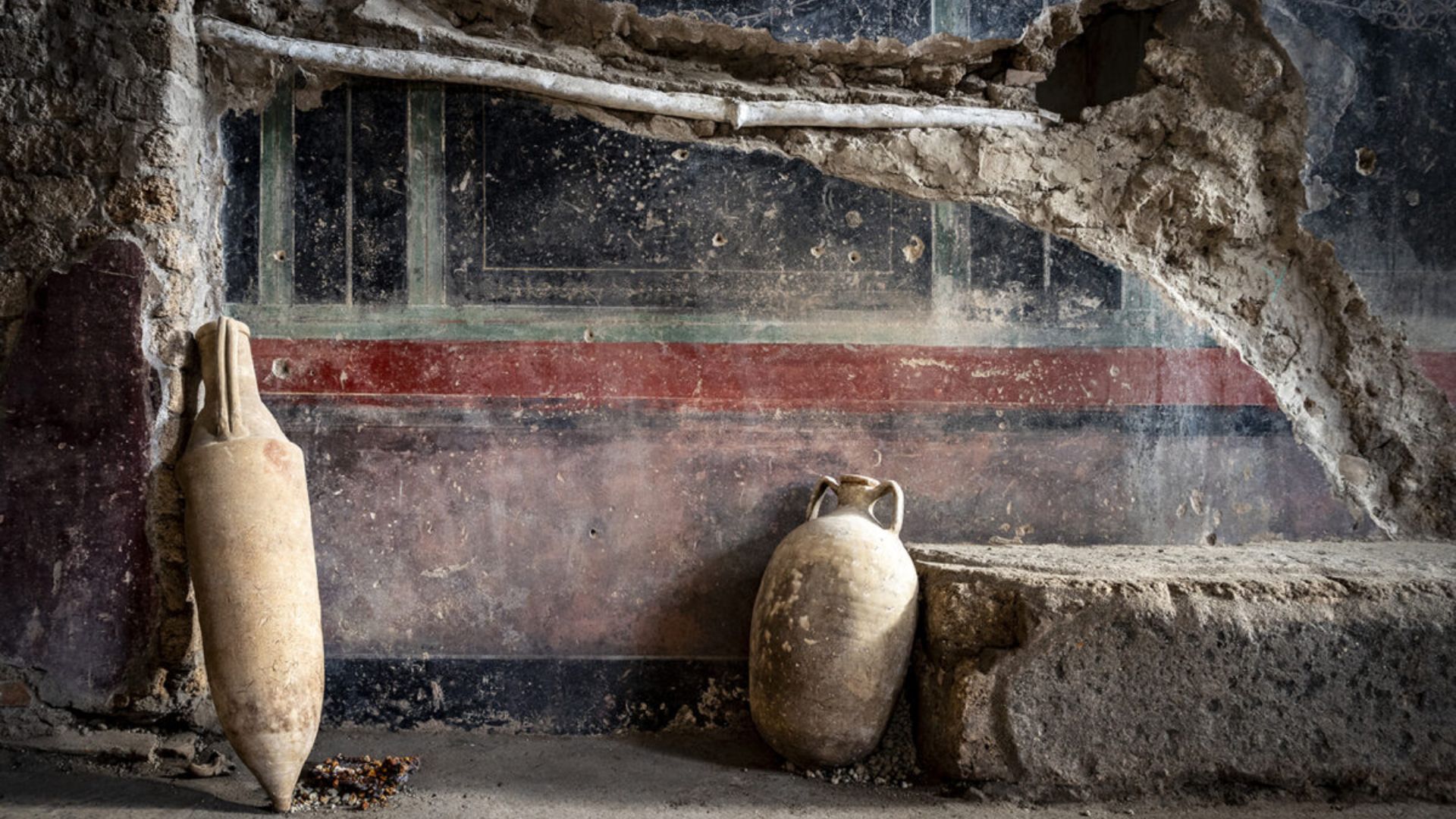Archaeologists Uncover Ancient Pompeii Bathhouse in Historic Discovery
Buried under 2,000 years of volcanic debris, archaeologists in Pompeii have uncovered the largest Roman bathhouse ever found in the city. Located in a previously unexplored section of Pompeii, the opulent bathhouse belonged to a wealthy politician who spared no expense in its construction.
The bathhouse boasts exquisitely decorated changing rooms, temperature-controlled thermal rooms, and a massive plunge pool. Its remarkable preservation has led archaeologists to describe it as a prime example of the “Pompeii effect.”
“It’s almost as if the people had only left a minute ago,” said Dr. Gabriel Zuchtriegel, director of the Archaeological Park of Pompeii, in an exclusive interview with the BBC.
This discovery is part of a major excavation project focused on uncovering new areas of Pompeii.

The bathhouse is the most impressive find yet, providing valuable insights into the social and political life of Pompeii’s elite, as well as the harsh realities faced by the slaves who served them.
A private spa house
More akin to a modern spa than a simple sauna, the bathhouse complex was part of a luxurious private residence believed to have belonged to Aulus Rustius Verus, a prominent politician in Pompeii.
The impressive house was situated near a laundry and bakery, suggesting that Verus may have owned these businesses as well. However, the spa was undoubtedly his most extravagant possession, designed to showcase his wealth and power to guests.
Before indulging in the three-part spa experience, guests would change into a room adorned with red walls and intricate marble mosaics.
The spa experience began in the caldarium, a hot room with a raised floor that allowed hot air to circulate, creating a sauna-like effect. Next, guests would move to the tepidarium, a warm room decorated with vibrant paintings, where they would apply oils to their skin and scrape them off with a strigil. Finally, they would enter the frigidarium, the grandest room of all, featuring red columns and a cold plunge pool large enough for 20-30 people. Frescoes of athletes adorned the walls.
“There are just a few houses that have a private bath complex, so it was something really for the wealthiest of the wealthy,” Dr. Gabriel Zuchtriegel told BBC. “And this is so huge – it’s probably the biggest bath complex in a Pompeiian private home.”
After enjoying the spa, guests would likely have dined in an adjacent banquet hall, a lavish space with black walls, scenes from Greek mythology, and candlelight, News.com.au reports.
A look at life as a slave in Pompeii, too
The central courtyard of the house features large basins, further emphasizing the opulence of the residence. However, the excavation also revealed a darker side of life in Pompeii.
The eruption of Mount Vesuvius in 79 AD buried the city and its 11,000 inhabitants under volcanic ash. Three bodies were found on the property, including a possible slave and a noblewoman clutching jewelry and gold coins.
The bathhouse complex offered a glimpse into the lives of the slaves who worked there. The boiler room, which heated the spa, suggests that the servants endured harsh working conditions.

The biggest Pompeiian excavation project this century
Hailed as a “once-in-a-century” find, the ongoing archaeological project aims to unearth new sections of Pompeii, as one-third of the city remains buried.
The palatial residence, located in the Regio IX section of Pompeii, was first identified two years ago.
The discovery of this luxurious bathhouse brings the excavation project to a successful conclusion.
Source: Interesting Engineering
Ancient artifacts unearthed in Iraq shed light on hidden history of Mesopotamia
Archaeologists Uncover Ancient Pompeii Bathhouse in Historic Discovery

